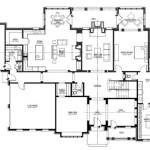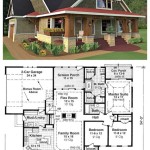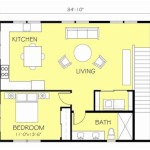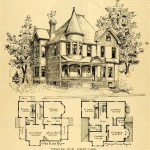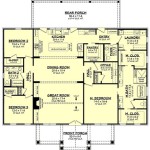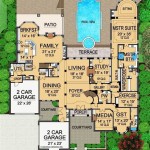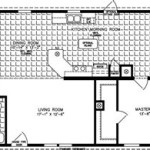In-Law Suite Floor Plans: Design Considerations and Benefits
An in-law suite is a self-contained residential unit within a larger house, typically designed to accommodate an elderly parent, relative, or caretaker. These suites offer privacy and independence while providing proximity to the main residence. Here's a detailed guide to in-law suite floor plans, considering design elements, benefits, and considerations:
Design Considerations
Accessibility: In-law suites should be designed with accessibility in mind, ensuring easy movement for individuals with limited mobility. This includes wide doorways, ramps, and accessible bathrooms with grab bars and walk-in showers.
Privacy: The suite should provide a separate living space with its own entrance and outdoor area. This ensures privacy and independence for the suite occupant.
Space Planning: The floor plan should optimize space while accommodating necessary amenities. A typical suite includes a bedroom, bathroom, living room, and small kitchen or kitchenette.
Adaptability: Consider designing the suite with flexibility in mind. This allows for future adaptations as the occupant's needs change, such as adding grab bars or modifying doorways.
Benefits of In-Law Suites
Extended family care: In-law suites provide a safe and comfortable environment for elderly parents or relatives, allowing them to maintain proximity and receive support while preserving their independence.
Flexible living space: The suite can also serve as a guest room or home office, providing versatility depending on the family's needs.
Increased home value: An in-law suite can enhance the value of the property, making it more desirable in the real estate market.
Caregiver convenience: The proximity of the suite allows caregivers to provide support without disrupting the main living area.
Emotional benefits: In-law suites foster a sense of connection and intergenerational support, strengthening family bonds.
Considerations for Floor Plan Selection
Size: Consider the occupant's lifestyle and needs when determining the appropriate size of the suite. A larger suite provides more space and amenities, while a smaller one focuses on essential living functions.
Layout: The floor plan should flow seamlessly and provide easy access to all areas. Consider open-concept designs or separate rooms for increased privacy.
Budget: The cost of construction and ongoing maintenance should be carefully considered. Factor in the materials, labor, and potential modifications.
Building codes: Consult with local building codes to ensure the suite meets all safety and accessibility requirements.
Future needs: Anticipate the occupant's potential future needs and design the suite with adaptability in mind. For example, consider a bathroom that can be easily modified to accommodate a roll-in shower or grab bars.
By thoughtfully planning an in-law suite floor plan, homeowners can create a comfortable and safe living space for their loved ones while fostering intergenerational support and enhancing the functionality of their home.
In Law Suite Plans Give Mom Space And Keep Yours The House Designers

House Plan 65862 Tuscan Style With 2091 Sq Ft 3 Bed 2 Bath 1

Front Side View House Plans With A Separate In Law Suite

Pin By Jessie Brooks On Mother In Law Head Quarters 2024 Apartment House Floor Plans

Southern Style House Plan With In Law Suite

In Law Suite House Floor Plans Mother Apartment

In Law Suite Floor Plan

Homes With Mother In Law Suites

Exquisite Mountain Modern Home Plan With In Law Suite And 4 Car Garage 95104rw Architectural Designs House Plans

House Plans With In Law Suites Houseplans Blog Com


